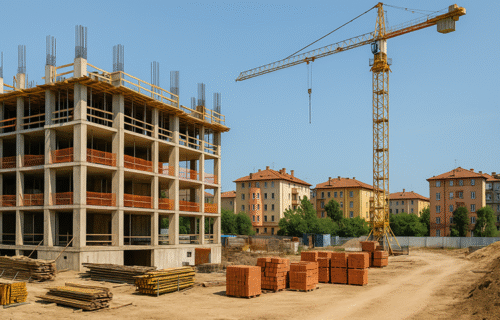Italy’s building sector showed tentative signs of recovery during the second quarter of the year, as new data from the national statistics office pointed to a modest rise in construction approvals compared with the previous quarter.
Between April and June, the number of homes granted planning permission increased slightly, alongside a small expansion in total floor space dedicated to housing projects. Developers also secured more permits for non-residential buildings, marking a notable short-term rebound following earlier declines.
However, when measured against the same period last year, the overall picture remained less encouraging. The number of new dwellings authorised fell by more than seven percent, while total residential floor area slipped marginally. The downturn was even more pronounced for commercial and industrial projects, which recorded a year-on-year drop after several quarters of steady growth.
Economists say the figures highlight the mixed momentum in Italy’s construction market. Demand for new housing remains constrained by higher borrowing costs and stricter financing conditions, while corporate investment in logistics and manufacturing space has slowed after peaking in 2023. Despite this, quarterly data suggest the sector may be stabilising, helped by continued renovation incentives and gradual improvement in building activity in northern regions.
Industry observers note that construction output across much of Europe is experiencing a similar slowdown, reflecting tighter credit and a cautious approach from investors. Italy’s modest quarterly growth indicates resilience in some local markets, but analysts warn that a sustained recovery will depend on broader economic confidence and renewed private-sector investment.
The next update from the national statistics office, covering the third quarter of 2025, is expected later this year and will show whether the early signs of stabilisation can translate into lasting growth for the country’s construction industry.
Source: Istat
